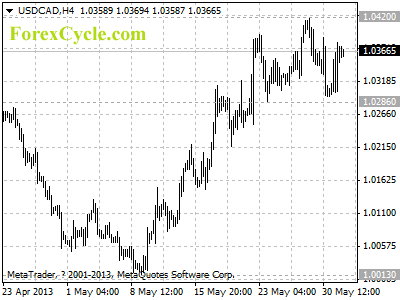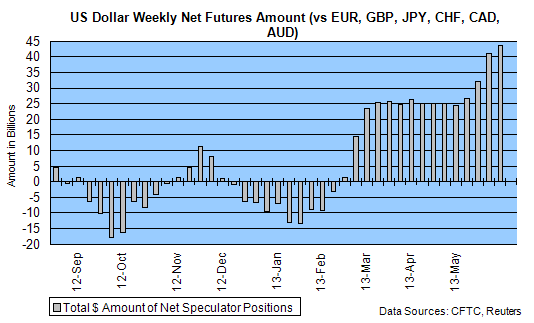By MoneyMorning.com.au
We would be lying if we said this market is plain sailing for investors.
That’s why we don’t claim that.
If we thought this market was risk-free then we would tell you to put all your money into stocks.
But it isn’t. So we won’t.
We only suggest you have less than 50% of your investment savings in the stock market. Even though some say that’s still too much.
But whatever amount you set aside for the stock market, it should be something. Because the worst thing you can do is to avoid the market completely – especially right now. Here’s why…
We know it’s not cool to say that we like stocks. Not when the papers are full of talk about money printing, central banks and bond bubbles.
But we’re not interested in being cool. We’re just interested in making money…as much as we can. And our bet is you think pretty much the same way.
That’s why you read our email each day.
You want us to show you the best way to make money. Last Monday we claimed the best way to make money was to either start a business, or to invest in shares.
We gave you a couple of examples – Richard Branson and Kerry Packer. But perhaps that wasn’t enough to convince you. So today we’ll give you 10 more examples…
Investing in Stocks Beats Property on the Road to Riches
Below is a list of the world’s top 10 billionaires, according to Bloomberg (all amounts in US dollars):
- Bill Gates – $72.1 billion
- Carlos Slim – $67.8b
- Warren Buffett – $61.1b
- Ingvar Kamprad – $53.1b
- Amancio Ortega – $53b
- Charles Koch – $44.3b
- David Koch – $44.3b
- Larry Ellison – $40.8b
- Christy Walton – $36.8b
- Jim Walton – $35.1b
All these folks have one thing in common. They invest in businesses – a wide variety of businesses too. Bill Gates, of course, built his wealth through Microsoft [NASDAQ: MSFT]. Ingvar Kamprad built the IKEA furniture stores. And Christy and Jim Walton inherited wealth in Wal-Mart [NYSE: WMT].
And it’s not just the top 10 either. If you go down the list of the other 90 billionaires, you’ll find the same pattern – men and women who invest in business.
You can’t argue with those numbers. If you want to build wealth you need to invest in businesses. That’s true whether you want to be a billionaire or just a ‘plain old’ millionaire.
But what about property? As we said last week, property is a genuine way to build wealth…but it’s not a great way. Sure, plenty of folks have made a lot money from property – Trump, Lowy, Grollo.
But let’s look at the property billionaires in the Bloomberg top 100. How many do you think there are? 10? 20? What about 30?
Try three – Lee Shau Kee ($24.2b), Donald Bren ($14.3b), and Gerald Grosvenor (aka the Duke of Westminster – $12.7b). That’s not a great report card for property investment.
But we won’t give property investors too much stick. As we say, you can make money from property. In fact, you should check out this report that unveils some remarkable claims about the Australian property market. It includes the extraordinary prediction that the Australian property market is on the cusp of a 14-year bull market run. Is that really possible? Check it out for yourself.
Besides, there are two investment classes that are a no-show in the top 100. Can you guess what they are?
Even After Recent Falls, Stock Investors are Still Ahead
The first one’s easy – cash. You won’t build lasting wealth for retirement by keeping all your savings in cash.
And as for the second (we’re sorry to say this to our gold investing pals), there isn’t a single person on the billionaire list who made their wealth primarily by investing in gold.
Of course, past performance isn’t always a guide to future performance, but if you believe that history is important when predicting the future, then history tells you that investing in businesses is the best way to create wealth.
That’s why we back the stock market every time over every other investment class…not for all your money, but for part of it.
It’s why we’ve never believed you should have all your money in gold and silver. And by the same token it’s why we’ve never believed you should have all your money in cash. Even when the market was as scary as heck we advised having at least 25% of your wealth in stocks.
So, are all businesses alike? Or should you pick a particular sector to invest in?
According to the Bloomberg list of top 100 billionaires, wealth accumulated and invested in diversified sectors takes the top billing with 22 billionaires.
But we prefer the second most popular category – technology. Not just because five of the top 30 billionaires are technology billionaires, but because we believe the technology sector will become the biggest path to wealth over the next 20 years. Not just for billionaires, but for everyone.
So yes, we get it. The stock market has rallied hard (1,200 points in 12 months), and now it has fallen (300 point in two weeks). But when you crunch the numbers, if you missed out on the rally because you were too scared to buy stocks, you’re much worse off than you could have been.
But don’t panic. If you missed that rally, that’s in the past. Just make sure you don’t miss out on the next one.
You’ve still got time. We still see the Aussie market tracking sideways for the rest of this year. It’s now trading at the bottom of the range, so it’s a great time to buy stocks. It’s not risk-free, but it’s a risk worth taking.
Cheers,
Kris
Join me on Google+
PS. Technology stocks will be the single best place to invest your money over the next 20 years. That’s why we’ll soon launch a new technology investing newsletter, Revolutionary Tech Investor. We’re so confident in this view that we’ve hired a technology analyst, Sam Volkering, to help out. He’ll help identify the best technology trends and which companies can offer the most profitable opportunities for investors. In today’s Money Morning, Sam introduces part one of a three part series discussing what he believes will be the 10 key technology trends of the future…
From the Port Phillip Publishing Library
Special Report: How to Buy Better Stocks
Daily Reckoning: Reckoning on the Perils and Potential of Property
Money Morning: Money Weekend’s FutureWatch: 1 June 2013
Pursuit of Happiness: How One Reader Saved $300 with a Simple Phone Call






